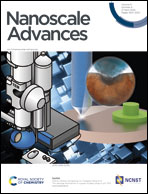Ultrasmall Mn-doped iron oxide nanoparticles with dual hepatobiliary and renal clearances for T1 MR liver imaging†
Abstract
Although magnetic nanoparticles demonstrate significant potential as magnetic resonance imaging (MRI) contrast agents, their negative contrasts, liver accumulation, and limited excretion hinder their application. Herein, we developed ultrasmall Mn-doped iron oxide nanoparticles (UMIOs) with distinct advantages as T1 MRI contrast agents. Exceptionally small particle sizes (ca. 2 nm) and magnetization values (5 emu gMn+Fe−1) of UMIOs provided optimal T1 contrast effects with an ideally low r2/r1 value of ∼1. Furthermore, the use of Mn as a dopant facilitated hepatocyte uptake of the particles, allowing liver imaging. In animal studies, UMIOs exhibited significantly enhanced contrasts for sequential T1 imaging of blood vessels and the liver, distinguishing them from conventional magnetic nanoparticles. UMIOs were systematically cleared via dual hepatobiliary and renal excretion pathways, highlighting their safety profile. These characteristics imply substantial potential of UMIOs as T1 contrast agents for the accurate diagnosis of liver diseases.



 Please wait while we load your content...
Please wait while we load your content...